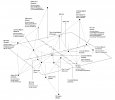Nobby-W
Not an axe murderer
- Joined
- Oct 7, 2018
- Messages
- 7,066
- Reaction score
- 15,997
VV Lyncis (Ishikari)
--RQQA @(QA) M4V (M3V) (-10.5, -0.5, 4.5)
This system hosts Dhiliwan Station, one of several routes between the Tannhauser and Isinior sectors.
VV Lyncis A
VV Lyncis B
Binary in distant orbit.
Connections
Gj 1105 - Ezra's Belt
20 Leonis Minoris (Isinor)
NN 3438 (Isinor)
GL 275.2 (Isinor)
10 Ursae Majoris (Isinor)
--RQQA @(QA) M4V (M3V) (-10.5, -0.5, 4.5)
This system hosts Dhiliwan Station, one of several routes between the Tannhauser and Isinior sectors.
VV Lyncis A
| The Belt (R) | Asteroid belt. Asteroid mining and developing economy supports a population of approximately 3 million. |
| Uray (Q) | Gas giant |
| - Arrah (A) | |
| - Hurst (B) | Pop 1m |
| Ishikari (Q) | Gas Giant |
| - Triumph (A) | |
| - Chamond (B) | Pop 1m |
| - Dhiliwan (B) | Rocky/icy moon with ISRU and mining/industry supporting a population of approximately 2 million. |
| Nau (A) | Rocky planet with a surface gravity of 0.12G. No permanent settlement although some mining supports a transient population of a few thousand. |
VV Lyncis B
Binary in distant orbit.
| Yamunanagar (Q) | Gas Giant |
| - Belvidare (A) | |
| - Meersbur (A) | |
| Börde (A) | Rocky planet with a surface gravity of 0.1G. |
Connections
Gj 1105 - Ezra's Belt
20 Leonis Minoris (Isinor)
NN 3438 (Isinor)
GL 275.2 (Isinor)
10 Ursae Majoris (Isinor)






